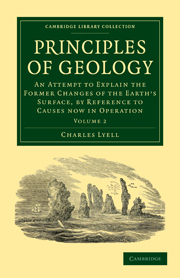 Principles of Geology
Principles of Geology Summary
It would be superfluous to examine the various attempts which were made to explain the phenomena of the distribution of species alluded to in the preceding chapters, in the infancy of the sciences of botany, zoology, and physical geography. The theories or rather conjectures then indulged, now stand refuted by a simple statement of facts; and if Linnaeus were living, he would be the first to renounce the notions which he promulgated. For he imagined the habitable world to have been for a certain time limited to one small tract, the only portion of the earth's surface that was as yet laid bare by the subsidence of the primaeval ocean. In this fertile spot he supposed the originals of all the species of plants which exist on this globe to have been congregated, together with the first ancestors of all animals and of the human race. “In quâ commodè habitaverint animalia omnia, et vegetabilia lætè germinaverint.” In order to accommodate the various habitudes of so many creatures, and to provide a diversity of climate suited to their several natures, the tract in which the creation took place was supposed to have been situated in some warm region of the earth, but to have contained a lofty mountain range, on the heights and in the declivities of which were to be found all temperatures and every clime, from the torrid to the frozen zone.
- Type
- Chapter
- Information
- Principles of GeologyAn Attempt to Explain the Former Changes of the Earth's Surface, by Reference to Causes now in Operation, pp. 123 - 140Publisher: Cambridge University PressPrint publication year: 2009First published in: 1832
